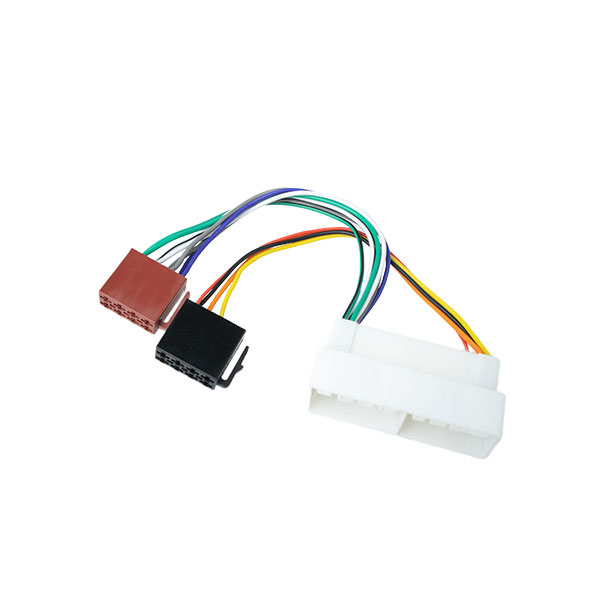Automotive harness manufacturers take you through wiring harness components
 Mar 21, 2023|
Mar 21, 2023| View:425
View:425To find the best automotive harness manufacturers, as an automotive harness manufacturer, today we will discuss what a harness assembly is, what it is designed to do, and how the harness is assembled, which we hope will help you.

What is a harness assembly?
An automotive wiring harness is defined as the assembly of wires, terminals and connectors that run throughout a vehicle to transmit information and power. Automotive wiring harnesses are designed to meet the electrical and dimensional requirements of a vehicle and integrate to connect different parts of the vehicle such as the body, engine, instrument panel, chassis, etc. Automotive wiring harnesses enable the transmission of control signals and electrical power to the electronic and electrical devices in the vehicle to ensure essential functionality and enhanced safety.
A harness assembly, also known as a wiring assembly or cable harness, is considered to be a subassembly or group of wires designed to carry electricity or signals. The basic type of harness may have only three components.
Harness components are often confused with cable assemblies. However, there are differences between them. The main difference is that a cable assembly has only two ends. With a wire harness, however, it has multiple ends/branches extending in different directions, with many terminals on each branch.
A typical harness has wires, usually dozens of them. Sometimes it includes hundreds of terminations and combinations. In addition, any reliable automotive harness manufacturer will have specialist engineering staff who have extensive experience in designing and manufacturing harnesses.
What does a wiring harness design look like?
The design of a wiring harness helps to simplify the manufacture of larger designs. The design is based on the electrical and geometric requirements of the equipment in which you will fit the harness.
Wire harnesses are commonly used in the world of electronics, in the manufacture of industrial equipment and machinery, in the automotive industry and in the manufacture of white goods such as clothes dryers, washing machines, refrigerators and some household appliances.
Using a wiring harness simplifies the creation of larger components. This is done by integrating the wiring into a single unit, as well as several units for installation. When you bundle many sub-assemblies, cables and wires in any harness, this ensures that the whole assembly is well secured from any vibrations and wear and tear.
Once the design has been created, the harness-building process begins with the development of a schematic. This schematic can be used to create the assembly board and manufacturing paperwork for the harness.
The pin board or assembly board is the full size of the harness drawing. This reveals all its components and where it is located. This is also used as the workbench for the harness. In addition, the supply of wires required for the harness is done on the main spool. In addition, they are cut to the length you want and, if necessary, marked by labeling or printing.
Once it has been cut to the right length, these wires are stripped to expose the uninsulated conductors. In addition, they come complete with connector housings and the necessary terminals. These components and wires are then plated onto the circuit board and bound together using cable ties, cable ties, straps, tape, sleeves, squeeze cords, or any combination of these.
What is the assembly process for wire harnesses?
The first step in assembling an electronic wire harness is to cut the wires to the required length, usually done by special wire cutters.
The ends of the wires are then stripped to expose the cores of the wires.
The next step is to fit the wires to any desired terminals or connector housings, which come in many different sizes and specifications.
Finally, the wires are assembled into a harness, including a bench or assembly board that must be set up according to the design specifications.
In addition, electronic harness assemblies can be manufactured by hand or by machine, each method requiring many different processes. These include routing and inserting the wires through sleeves, wrapping the wires with tape, crimping the terminals to the wires, securing the strands with tape, clips or cable ties, etc.
You can use a test board to implement the testing of the electrical functions of a cable or a wire harness. The test board is pre-programmed with the necessary electrical characteristics and you can insert the complete harness into the test board and then test it several times or individually.
This is all about the introduction. If you are looking for a reliable automotive harness manufacturer, h welcome to contact us and we will provide you with the most suitable solution for your needs.






